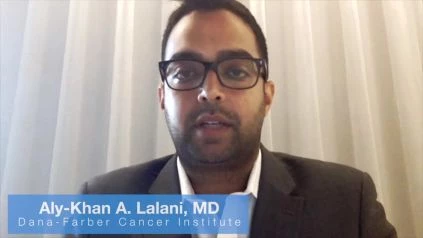Dr. Aly-Khan A. Lalani, MD discusses the impact of Neutrophil-to-lymphocyte ratio (NLR) in mRCC and it’s effect on outcomes.
BACKGROUND:
Inflammation is a hallmark of solid tumors, where neutrophilia occurs as an inflammatory response and may suppress the cytolytic activity of immune cells such as lymphocytes, natural killer cells, and activated T cells1
Elevated NLR is associated with worse outcomes in several malignancies, including metastatic renal cell carcinoma (mRCC) patients treated with oral tyrosine kinase inhibitors (VEGF-TKIs)2
However, the utility of NLR in mRCC patients treated with conventional immune checkpoint blockade is not well characterized
OBJECTIVES:
To evaluate the association of baseline NLR, and changes during treatment, with outcomes in mRCC patients treated with immune checkpoint blockade
METHODS:
Retrospective cohort study of mRCC patients treated with PD-1/PD-L1 immune checkpoint blockade (ICB) at Dana-Farber Cancer Institute from 2009-2017 with NLR measured at baseline and 6 (±2) weeks on therapy
We first investigated the impact of baseline NLR (natural log-transformed [LnNLR]) on objective response rate (ORR, complete response or partial response), progression free survival (PFS, time from start of ICB to radiographic or clinical progression, or death), and overall survival (OS, time from start of ICB to death/last follow up)
Landmark analysis at 6 weeks was also conducted to explore the prognostic value of LnNLR at 6 (±2) weeks or relative NLR change (calculated as % change ({[NLR week 6 / NLR week 0] – 1}*100) and subsequently grouped in three groups (?25% decrease, no change, ?25% increase) on ORR, PFS, and OS
Cox or logistic regression models allowed for adjustment of line of therapy, number of IMDC risk factors, RCC histology (clear cell vs. non-clear cell), and baseline NLR

